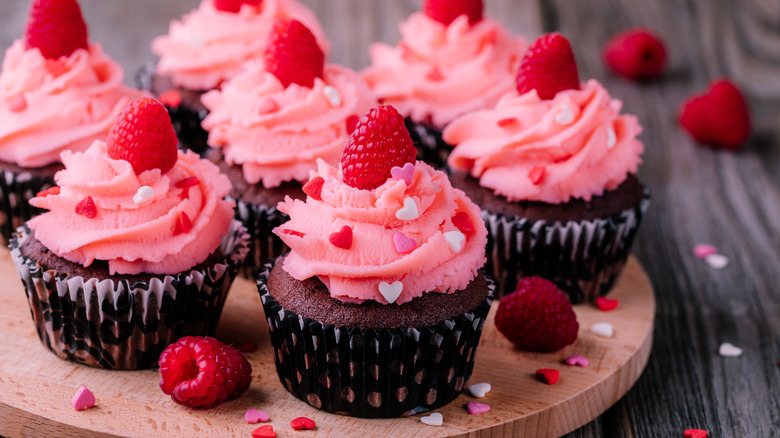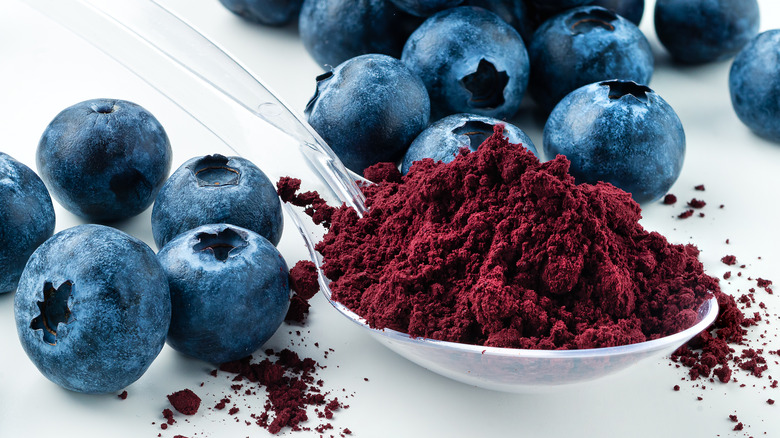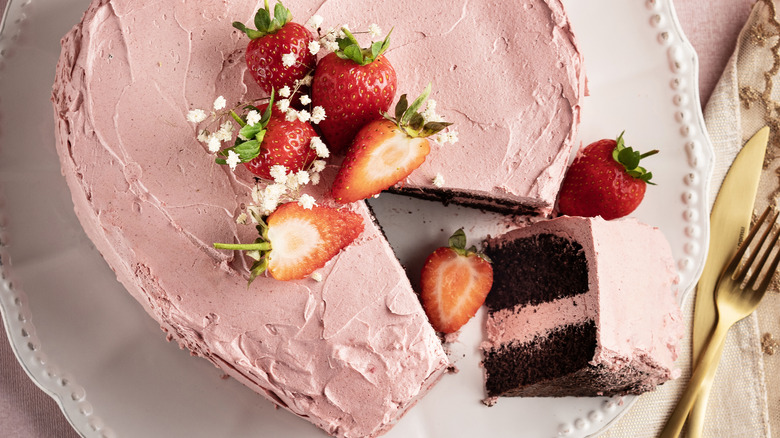When Making Fruity Buttercream Frosting, Never Use Fresh Fruit
When you whip up a bowl of homemade buttercream frosting, you can infuse the sweet topping with extra flavor by adding a few drops of a flavored extract, such as vanilla, peppermint, or orange. But if you want to add a burst of color along with flavor, including fruit may be the way to go.
However, hold off on shopping for the freshest seasonal fruits available, because adding fresh fruit to buttercream frosting isn't necessarily a good idea. The natural juices in fresh fruit can ruin the consistency of the frosting by making it too thin and runny. The natural sweetness of fresh fruit may not be able to hold its own against the density of the sugar in a frosting recipe, which can bury milder fruit flavors. So although juicy fruits might be delicious to snack on, they may not be the best choice to include in a buttercream frosting.
Instead, there is an easy fruit option that might be the best way to add both a punch of color and flavor when you want to upgrade your buttercream frosting: fruit that's been freeze-dried.
The hows and whys of using freeze-dried fruit in frosting
The biggest reason freeze-dried fruit is a better choice as an add-in for buttercream frosting is its lack of moisture. Freeze-dried fruit doesn't contain any added sugar, either. That lack of moisture and sugar means freeze-dried fruit won't affect the consistency of the frosting, so you can add in more fruit for a bigger burst of flavor.
You will want the freeze-dried fruit to be finely ground so that it is easy to mix into the frosting. This can be accomplished by adding the dried fruit to a blender or food processor. Pulse the fruit until it has the texture of a fine powder. Once the fruit has been pulverized, it can be folded into the frosting. That powder will blend with the ingredients in the frosting to spread flavor and color throughout the entire bowl. The frosting is then ready to be spread on top of cakes or cupcakes.
If you aren't sure of the exact measurement to add to the frosting, it's okay to start small and add more as needed. You can add up to 2 ½ ounces of powered freeze-dried fruit to a standard recipe for buttercream frosting.
Choose fruit flavors that complement your cake
It's important to use freeze-dried fruit in your buttercream frosting, not dehydrated – there are differences between the two. In this application, the important one is moisture content. Although the term "dehydrated" might suggest that the product is moisture-free, dehydrated fruit retains around 20% of the water content from the original fruit, per Women's Health Magazine. Freeze-dried fruit, meanwhile, holds onto only around 2%. This difference is important in ensuring extra moisture isn't added to the frosting and it keeps the desired consistency.
Removing the moisture from fruit consolidates the natural sugars, intensifying the flavor. Choose fruits that are complementary to the flavors of your cake. Chocolate and strawberry are a classic combination, as is orange with chocolate. Sweet, light raspberry provides a lighter fruit flavor to a chocolate cake. White cakes are more mildly flavored, so you might want to keep it understated with freeze-dried peaches or pears or experiment with bolder tropical fruits, like mango or pineapple.
You also have options when it comes to the frosting. You have more control over the flavor and consistency of homemade buttercream frosting, but time-saving store-bought frostings also can be used. What's important is the power of freeze-dried fruit to give your buttercream frostings — and the desserts they cover — a seriously tasty and colorful upgrade with little effort on your part.


